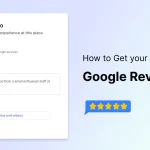What if you could move just a few spots up in Google and double your organic traffic overnight? Well, it’s a dream of every search engine optimization specialist.
But we all know one thing for sure – it takes all your blood and sweat, and even some sleepless nights in search of those magical strategies that could rank your blog posts in the top three spots of Google.
The truth is, SEO is full of buzzwords and strategies. Nobody knows which strategy could work for your blog. However, there is one concept that often gets overlooked yet delivers quick wins is – striking distance keywords.
We all feel frustrated in that phase of life when our blog posts or service pages are almost ranked on the first page of Google, but do not make it to the top three results. If you are one of those, this blog post is for you. Today, we’ll deep dive into what striking distance keywords are, why they matter, how to identify them, and much more.
Make sure you read the real-life example mentioned in the blog post so you can get a better idea about their identification and further implications.
What are Striking Distance Keywords?
Let’s start from the beginning. Striking distance keywords are those search queries your homepage or article already ranks for, but in the top three spots of Google. Generally, they fall in positions 10–20 on Google, which means they’re hanging out at the bottom of page one or the top of page two or three. But unfortunately, they are not further climbing up even after so many efforts.
All you need to do is a little optimization. After that, these keywords can “strike” up into the top 5 positions. Now, what this means is, they need an extra push with some more effort and optimization.
You May Also Like: How Local Business Citations Boost Your Online Presence?
Why Do Striking Distance Keywords Matter?
Let’s be honest – ranking on page two of Google is almost like you are invisible and nobody is interested in seeing or visiting you.
According to the research, more than 75% of people do not scroll past the first page of search results. Every user considers the top three results that seem more relevant to their search. The top 3 positions on Google get the lion’s share of clicks—sometimes over 60% combined.
When you move from position 12 to position 5, your website traffic eventually gets doubled or tripled for that keyword.
So, striking distance keywords matter because:
- They offer quick wins – Instead of starting from scratch, you can improve what’s already working.
- They give better ROI – Small updates often result in big ranking improvements.
- They ensure higher visibility – Moving from “almost there” to “front and center.”
In a nutshell, striking distance keywords are a good “shortcut” to better rankings and traffic.
How to Identify Striking Distance Keywords?
Now let’s get to something more practical and meaningful. How can you identify these golden opportunities to rank higher?
Follow this step-by-step approach:
1. Use Google Search Console (GSC)
First, you need to log in to Google Search Console and head straight to the Performance Tab. Look for queries where you already get impressions but the average position is between 11–30.
These are your striking distance keywords.
2. Leverage SEO Tools (Ahrefs, SEMrush, Moz)
Now you need to use the Organic Keywords report in these tools. Filter by position range (11–30) and then sort by search volume so you prioritize the most impactful ones.
3. Cross-Check with Analytics
Here’s an interesting fact – Not all striking distance keywords are worth chasing.
What you need to do is look at click-through rates (CTR) and conversion data so you can decide which keywords matter most to your business.
4. Find Out Keyword Variations
Sometimes we try to rank for multiple versions of a keyword. For example: “best shoes for jogging” vs. “affordable jogging shoes for men”
You need to pick the variations with the best balance of volume and competition.
You May Also Like: How Brand Mentions Impact SEO? A Complete Guide for 2025 and Beyond!
Steps to Optimize for Striking Distance Keywords
Now that you have identified the striking distance keywords, how can you give your content the boost or the push it needs?
1. Tweak On-Page SEO
In the first step, you need to add the keyword to your title tag if it isn’t there already. Use it naturally in your H1, subheadings, and first 100 words. Sprinkle in LSI keywords (related terms).
2.Update and Expand Content
Check if your content is shorter than the competition. If yes, add some new sections, FAQs, statistics, or examples that make your content more impactful. Also, refresh outdated information.
3.Improve Meta Descriptions
Do not forget to improve meta descriptions. After all, a well-written description can increase your CTR. Make sure you use power words and include the striking distance keyword.
4.Optimize Internal Linking
Link to the target page from other relevant pages on your site. Use anchor text with the striking distance keyword.
5. Build External Links
Building high-quality external links is important. So, reach out to industry blogs or partners for backlinks. Even a few quality links can give a great push to your content.
6. Enhance User Experience
Excellent user experience is everything. Speed up page load times and improve formatting (short paragraphs, bullet points, visuals). Make sure it’s mobile-friendly as well.
Real-Life Example of Striking Distance Keywords
Let’s say you run a food blog. One of your posts is titled “8 Best Foods for Weight Gain”. In Google Search Console, you notice it ranks in position 11 for the keyword “best foods for weight gain,” And the search volume is 10,000 per month. Boom—you’ve found a striking distance keyword.
What do you need to do next? Add the keyword to your title: “8 Best Foods for Weight Gain Fast (3 kg in 7 days)”. Simply, expand the post with video tutorials, diet plans, and more related materials.
Add internal links from related posts like “10 High-Protein Foods for Good Health.” Pitch the article to other food blogs for backlinks.
After just 1-2 weeks, you will see that your post has climbed to position 5th on Google. That one move could double your traffic within a few days.
You May Also Like: Signs You Are Suffering from a Poor Business Reputation Online
Tips to Keep the Process Efficient:
Follow these proven tips effectively to keep things running smoothly.
-
Prioritize by potential:
Chase keywords with a good balance of search volume and business relevance.
-
Focus on intent:
Make sure your content truly satisfies what users are looking for.
-
Avoid keyword stuffing:
Google rewards quality, not repetition.
-
Update consistently:
Keep refreshing content every few months.
-
Track progress:
Use GSC or SEO tools to see how rankings change.
You May Also Like: How to Increase Your Google Star Rating? A Detailed Guide
Avoid These Pitfalls at Any Cost:
Sometimes people get so desperate to rank that they find illogical and worst practices. Make sure you avoid these mistakes:
-
Going after irrelevant keywords:
Just because it’s in striking distance doesn’t mean it helps your business.
-
Ignoring user intent:
If the search is informational and your page is salesy, you won’t rank higher.
-
Forgetting about CTR:
A keyword in position 9 with a low CTR might not be as valuable as one in position 12 with higher clicks.
-
Not optimizing metadata:
Titles and descriptions play a huge role in rankings and clicks.
Final Thoughts
Striking distance keywords are one of the smartest ways to level up your SEO without reinventing the wheel.
- You already rank for them.
- They’re close to the top.
- With a little work, they can drive significant traffic.
So instead of always chasing brand-new keywords, take a step back and look at the hidden gems you’re already ranking for. At Ascend Marketing, we specialize in helping businesses uncover and optimize those striking distance keywords that are hiding in plain sight.
Many companies don’t realize that their site is already halfway up the mountain—our job is to give that final push to the summit. So, if you want to make it to the top 3 in Google, partner with our team and let’s get ranked.
You May Also Like: 10 Benefits of Online Reputation Management












